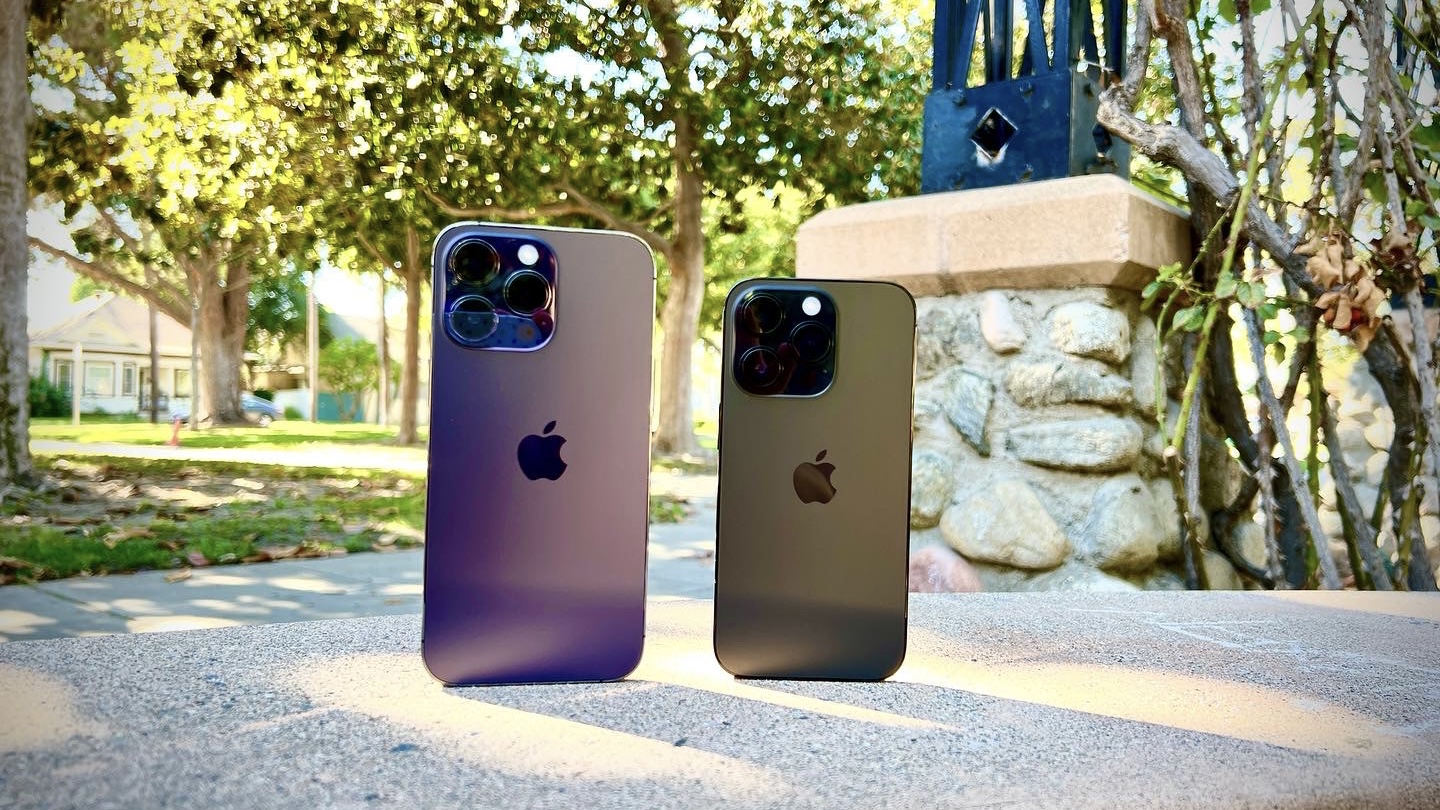iMore Verdict
The iPhone 14 Pro is the best iPhone you can buy right now. It packs in Apple's latest A16 Bionic chip and its blazing processing power, replaces the notch with the all-new Dynamic Island that utilizes all of your available screen real estate, has an Always-On display, and bumps the main camera up from 12MP to a whopping 48MP for incredibly detailed photos. And the all-new Deep Purple color is an absolute beauty.
Pros
- +
Blazing fast performance with A16
- +
48-megapixel main camera with triple lens camera system
- +
Dynamic Island is a useful notch replacement
- +
Up to 1TB of storage space
- +
Finally has an Always-On display
Cons
- -
Expensive
- -
Deep Purple could have been more...purple
You can always trust iMore.
When it was first launched in September 2022, we assessed every aspect of the iPhone 14 Pro and called it "the best iPhone you could buy." Fast-forward to 2023 -- and a lot has changed. Since the iPhone 14 Pro first came out, both the iPhone 15 and iPhone 15 Pro have landed on the scene, bringing a whole range of upgrades on previous handsets.
That means if you still want the best iPhone you can buy, take a look at the iPhone 15 Pro instead. But if you're still considering the iPhone 14 Pro – especially since it'll be cheaper than the latest handset – then this review will still help you weigh up your options.
On the surface, the iPhone 14 series looks pretty identical to the iPhone 13 lineup, but while the iPhone 14 and iPhone 14 Pro look the same as their predecessors on the surface, there’s far more to these devices than meets the eye. Well, maybe not quite so much for the standard iPhone 14, but definitely the iPhone 14 Pro and iPhone 14 Pro Max.
Updates include an amazing new Always-On display, a 48-megapixel Main camera sensor, the Dynamic Island, and so much more. So is the iPhone 14 Pro worth it? You bet. Let’s dive in and find out why.
iPhone 14 Pro: Price and availability
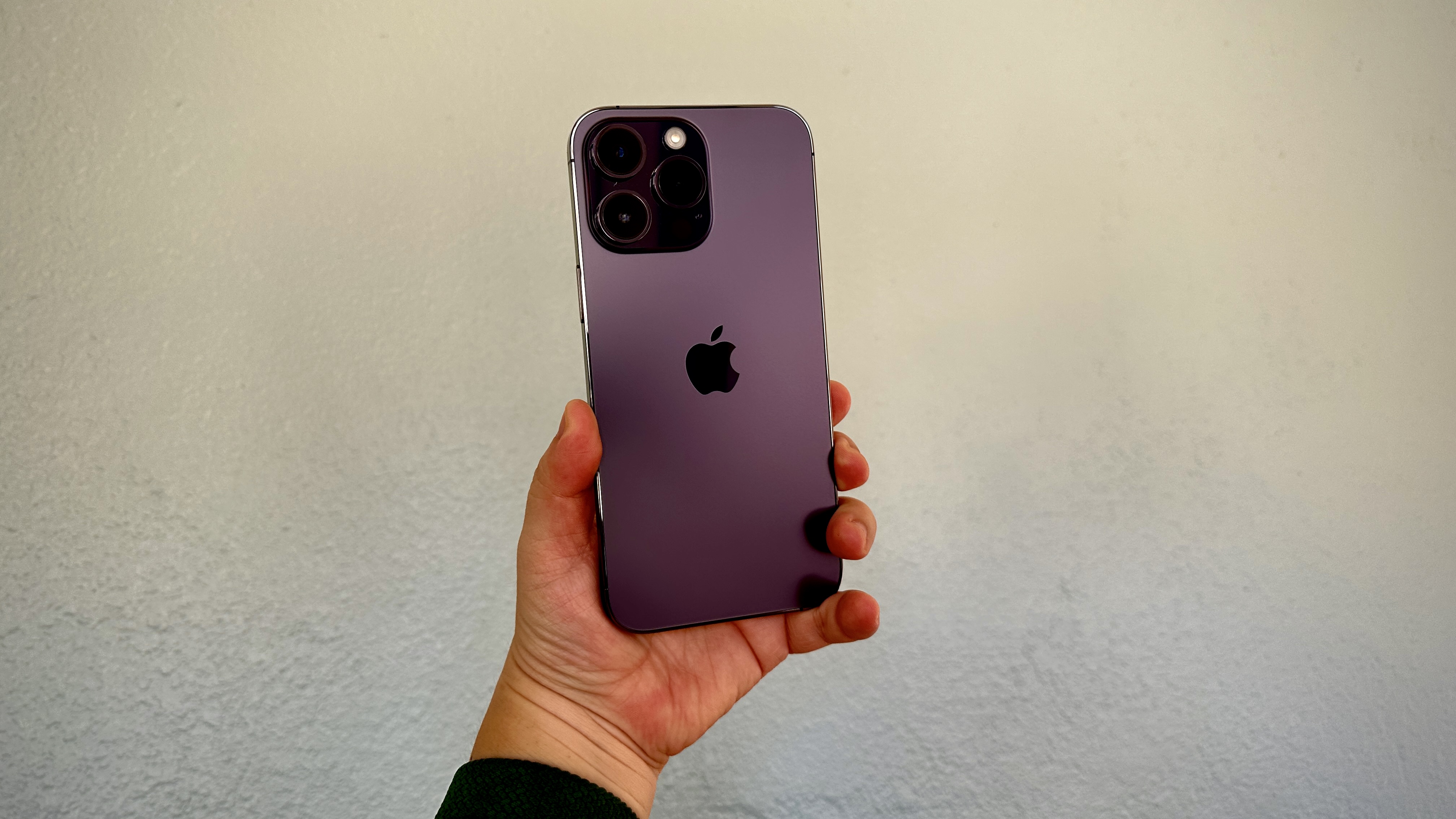
The iPhone 14 Pro and iPhone 14 Pro Max launched alongside the standard iPhone 14 on Sept. 16, 2022.
The Pro models come in four colors: Space Black, Deep Purple, Silver, and Gold. You can get the iPhone 14 Pro and iPhone 14 Pro Max models in 128GB, 256GB, 512GB, and 1TB storage capacities. Prices for the iPhone 14 Pro start at $999 for the base model, then $1099, $1299, and $1499, respectively. The iPhone 14 Pro Max starts at $1099 for the base model, then $1199, $1399, and $1599, respectively, depending on storage size.
| Storage | iPhone 14 Pro | iPhone 14 Pro Max |
| 128GB | $999 | $1099 |
| 256GB | $1099 | $1199 |
| 512GB | $1299 | $1399 |
| 1TB | $1499 | $1599 |
You can purchase the iPhone 14 Pro and iPhone 14 Pro Max directly from an Apple Store or online, your carrier of choice, and big box retailers like Best Buy, Target, and Walmart.
Though there was a lot of speculation that the price of the iPhone 14 Pro and iPhone 14 Pro models were going to be more expensive, that’s not the case, at least in the U.S. The iPhone 14 Pro starts at $999, just like the iPhone 13 Pro before it, and the iPhone 14 Pro Max starts at $1099 as well.
However, outside of the U.S., the iPhone 14 and iPhone 14 Pro just got more expensive because the value of the U.S. dollar is currently strong. Other countries may also include tax in the price, whereas only a few states in the U.S. exclude sales tax, making these big price differences you may be seeing.
iPhone 14 Pro: Hardware and design

Weight: 206g
Dimensions: 147.5 x 71.5 x 7.85mm
Display size: 6.12-inch
Resolution: 2796 x 1290 Full HD+ Super Retina display
Pixel density: 460ppi
Chipset: A16 Bionic
RAM: 6GB
Storage: 128/256/512GB/1TB
Rear camera: 48MP main, 12MP ultra wide, 12MP telephoto
Front camera: 12MP
Battery: 3,200mAh
Physically, the iPhone 14 Pro looks the same as the iPhone 13 Pro. It has the stainless steel flat edges that have been present since the iPhone 12, a frosted matte glass back, and the Ceramic Shield front that should make the front glass more drop resistant and resilient to scratches (though in my past experience, this hasn’t always been the case). If you’ve had an iPhone 12 Pro or iPhone 13 Pro, then really, nothing has changed too much in terms of the hardware itself.
While the silver and gold colors are quite similar to previous generations, Space Black is slightly darker than iPhone 13 Pro's graphite color (though it’s still grayer than actual black). Sierra Blue and Alpine Green have also been eliminated in favor of a new Deep Purple color. This is the color that I personally chose for my iPhone 14 Pro order, and I think it’s one of the more exciting colors for the Pro, at least since Pacific Blue.
Despite being called “Deep Purple,” it’s actually a more subtle shade that can vary wildly depending on the lighting situation that it’s in, at least on the matte glass part. Sometimes it can look like lilac with a lot of gray blended in, but in cooler lights, the purple can really stand out and shine. On the camera bump, the purple is definitely more of a deep color as advertised. I believe if you go with the Deep Purple iPhone 14 Pro or iPhone 14 Pro Max and need one of the best iPhone 14 Pro cases, then a clear one would work best for this unique hue.
Though the iPhone 13 Pro had a big camera bump, Apple hasn’t stopped there. The iPhone 14 Pro has a slightly thicker camera bump, and that’s due to the bigger sensors and lenses that Apple packed into the device. So if you prefer to use a naked device and set your phone down, the unevenness may be more noticeable. But if you use a case, depending on the one that you choose, it may be less noticeable as some provide thicker cutouts to make it as flush as possible.
Of course, there is a big standout feature of the iPhone 14 Pro design that blends both hardware and software together into a seamless experience. It's the all-new, yet oddly named, Dynamic Island.
iPhone 14 Pro: Welcome to Dynamic Island
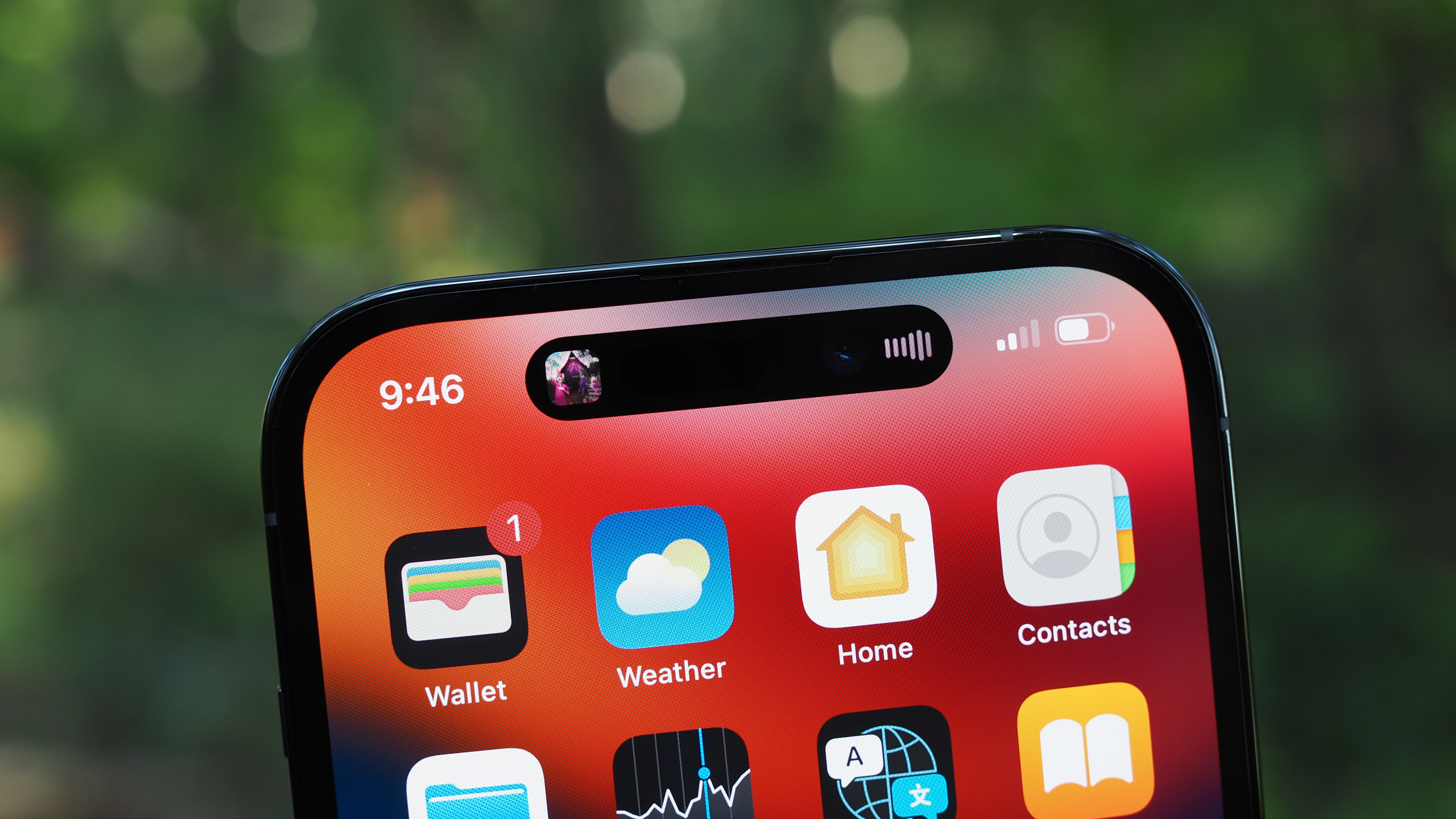
This is one of my absolute favorite features of the iPhone 14 Pro models. If you’ve followed my work on iMore, you’ll be aware that I truly hated the notch when it was first introduced on the iPhone X. In fact, it was one reason why I decided to skip the X and instead got an iPhone 8 at the time (plus I was unsure about forgoing the Home button). I’ve grown used to it over time, but I still find the notch to be a big waste of space on the status bar. With that said, I’m happy about the notch’s replacement: Dynamic Island.
The Dynamic Island is a combination of the pill and hole-punch cutouts at the top of the display, which houses the TrueDepth camera and Face ID sensor array. Apple turned the useless notch into something useful through a fusion of hardware and software design and engineering. It’s interactive — hence the “dynamic” part of the name — and just an absolute delight to use.
When the Dynamic Island is in an “idle” state, you see a single, elongated capsule at the top of the screen, where you’d normally see the notch on previous devices. Despite it being two actual cutouts, thanks to the integration with iOS 16 software, it appears as a singular “cutout.” But as you use your iPhone 14 Pro, the Dynamic Island will fluidly change, depending on what you do.
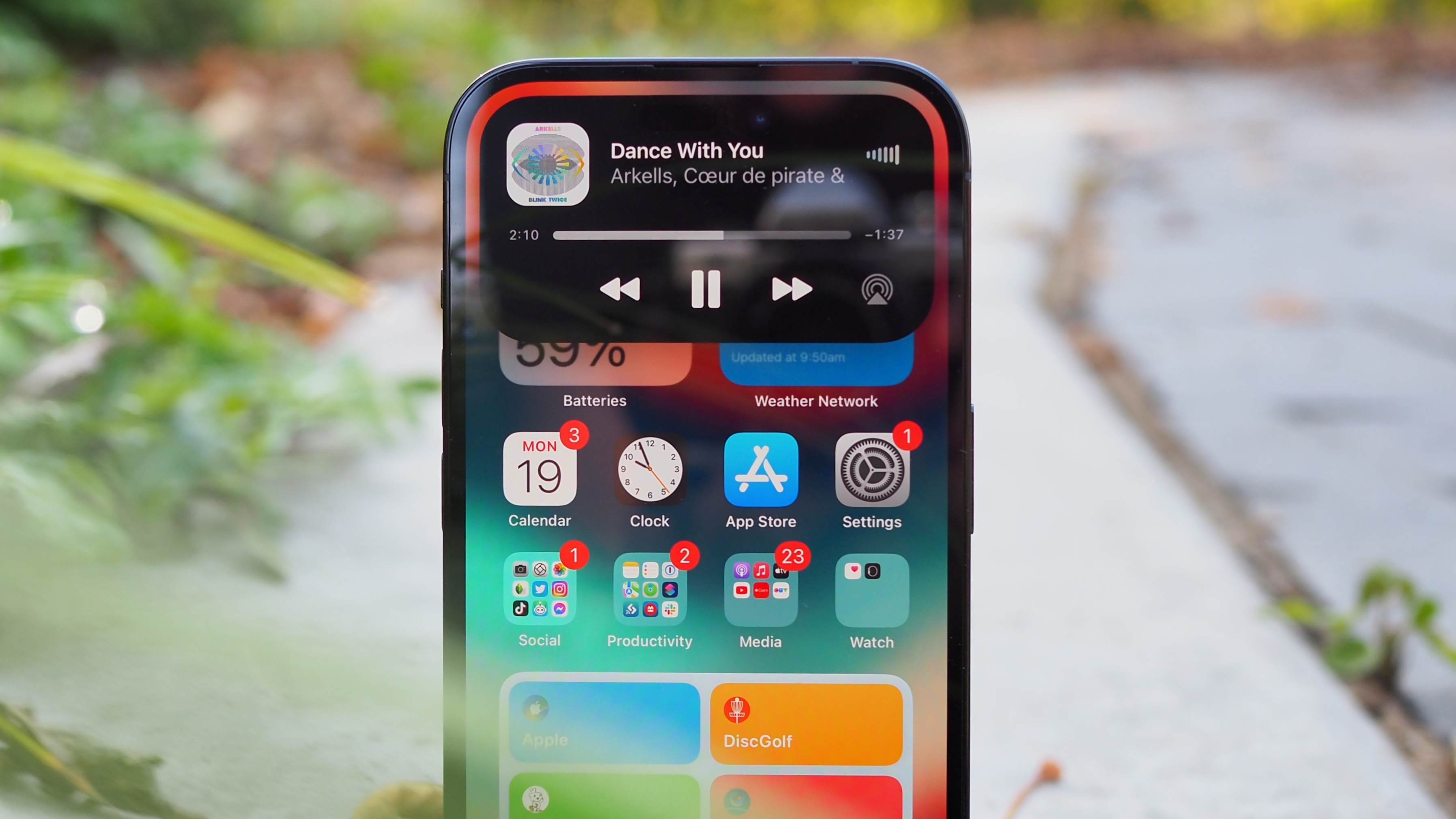
The Dynamic Island may have a silly name, but it is a worthy successor to the infamous notch. Good riddance to the notch, which was a waste of space.
When the iPhone 14 Pro is locked, the Dynamic Island will stretch out slightly and show a lock icon on the Always-On display (I’ll get to this in the next section) to indicate that it’s locked. When you pick it up and unlock it via Face ID, there’s an animation to indicate that you’ve unlocked the handset, and then it will go back to the idle size.
Dynamic Island is also home for your notifications and alerts. If you get a phone call, it will expand to show the incoming call info, and also have buttons to answer or decline. It shows a Face ID animation if you use Apple Pay or a way to authenticate an app in general. As you play audio from the Music or Podcasts apps and you return to the Home Screen, the Dynamic Island transforms and shows tiny album art and has a visual equalizer to show that there is audio playing in the background. You can also tap and hold on the Dynamic Island to make it expand into a playback control center, or just tap the Dynamic Island itself to return to the app.
You can also have multiple apps running in the Dynamic Island. For example, say you have your Music app playing, and you need to set a timer, the Dynamic Island can handle that without breaking a sweat. With two apps, the Dynamic Island splits up into two separate areas: one longer, more elongated capsule (which hides both the Face ID sensors and the TrueDepth camera), and a secondary circle — think of the letter “i,” but sideways. In the case of the timer, the secondary Dynamic Island element features a timer icon that displays how much time remains.
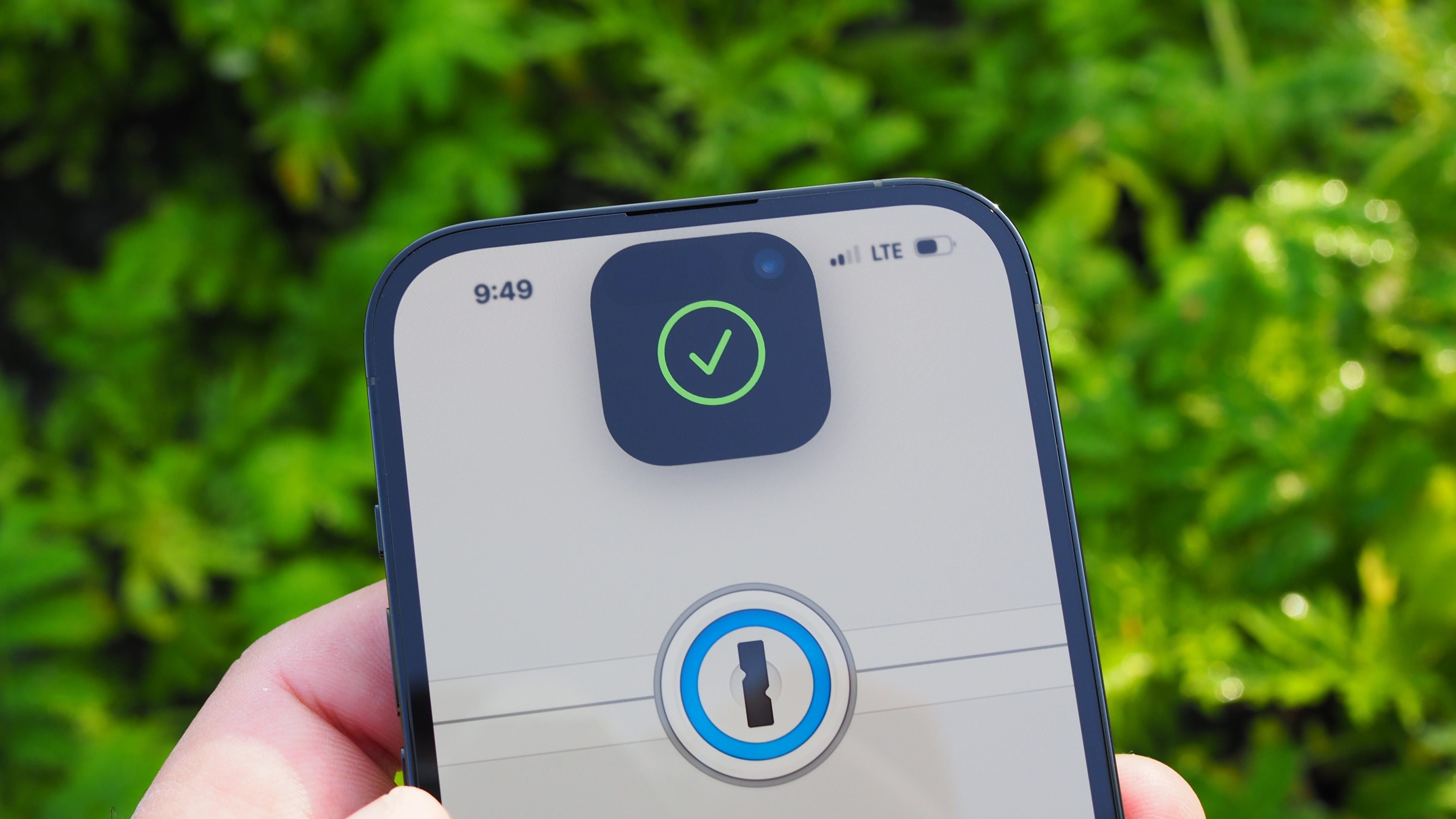
While we all saw the notch replacement coming, none of us expected the Dynamic Island in 2022. Apple surprised everyone, and it's the defining feature of the iPhone 14 Pro and beyond. It’s still delightful, even whimsical, to use, and it adds another layer to multitasking on the iPhone which is a beautiful blend of hardware and software.
iPhone 14 Pro: Display
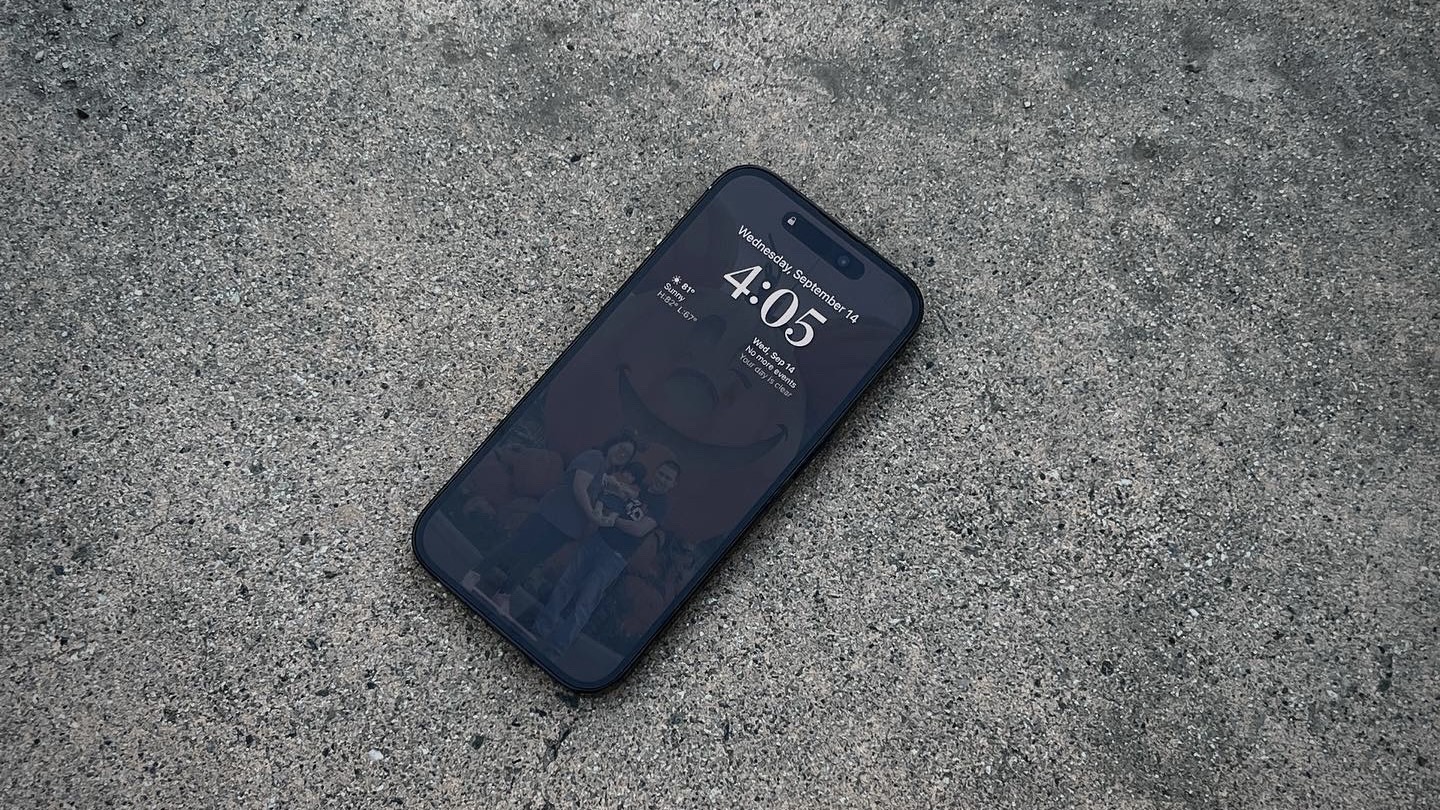
New on the iPhone 14 Pro is the Always-On display (AOD). This isn’t a brand new concept to Apple, though, as the Apple Watch began using AOD with the Apple Watch Series 5. However, this is the first time that the AOD has come to the iPhone, though Android devices have had AOD for quite some time. But you know how it goes — Apple isn’t first because it wants to do it the best.
This also applies to the AOD. In fact, the way Apple handles this on iPhone 14 Pro is a bit different than how most Android devices have done it. I had a brief stint with a Samsung Galaxy S8 a few years ago, which had an AOD. From my brief experience, the AOD was quite minimal, only showing the clock, battery level, and any missed notifications you had for calls or messages.
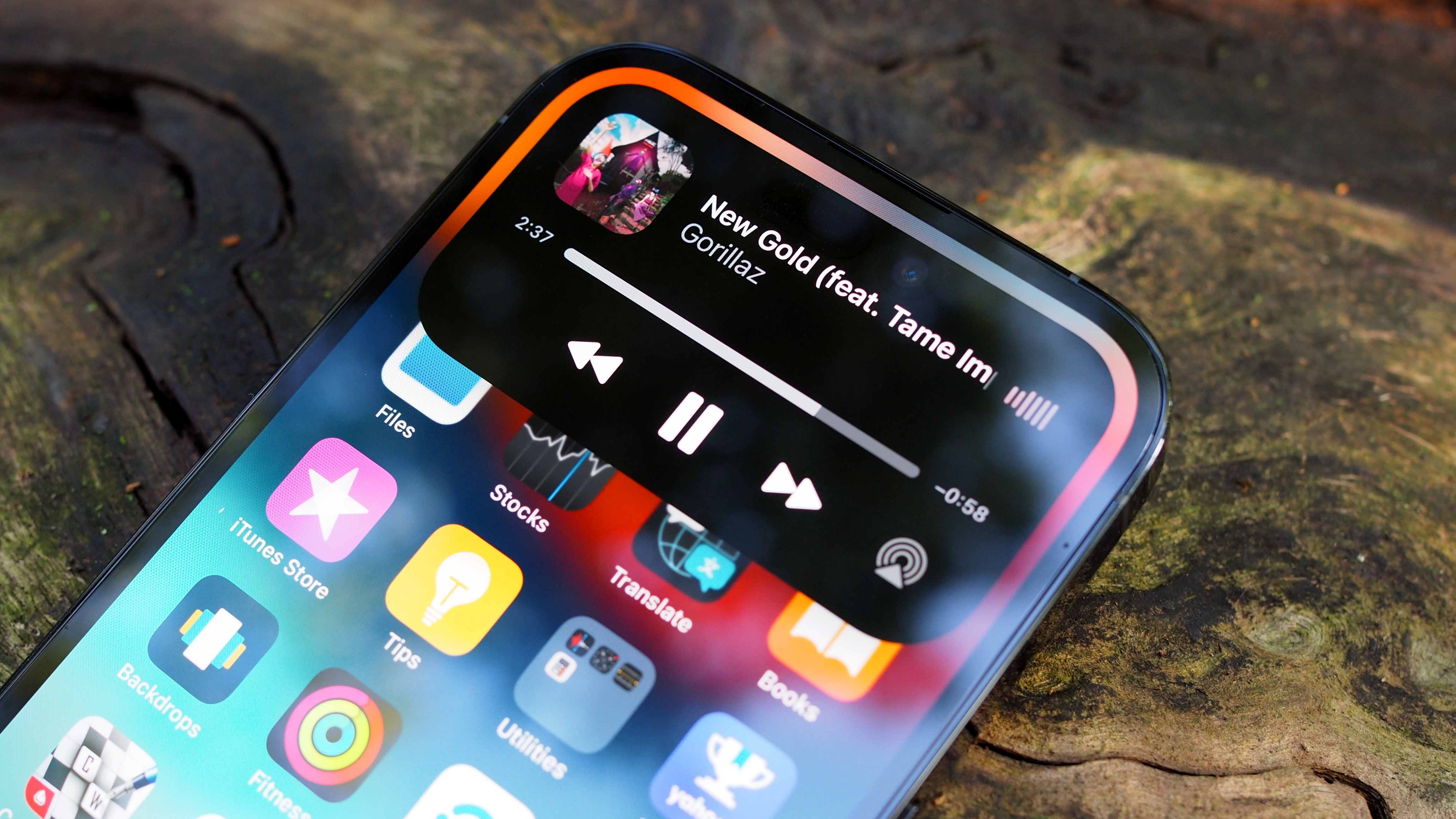
I believe that Apple’s implementation of the AOD is much nicer, though it seems that I may be in the minority with that opinion. It dims your entire Lock Screen wallpaper, but you can still see the date, clock, and even any widgets you set up. Incoming notifications come in from the bottom and are visible with a quick glance. When you tap or raise your iPhone 14 Pro or Pro Max, the AOD springs to life. Even in direct sunlight, I found the AOD to be very easy to see when not in use. It may depend on the wallpaper that you use, but mine was still visible in direct sunlight, and the on-screen information is legible, though this may also depend on the color and transparency you set.
I admit though, it was weird having an AOD on the iPhone at first. Often I simply thought I didn’t turn the screen off. But after just a few hours, I got used to it, and now I’m not sure how I did without it this entire time. It’s wonderful just being able to glance over at your device and just see the time, or if you have any notifications waiting for you. It’s very much like when the AOD came to the Apple Watch — it was possible to live without it, but why would you want to?
Of course, there may be concerns about how the AOD affects battery life. I’ve kept the AOD on by default and honestly have not noticed any difference in the battery from normal, everyday use. Any effect it has is very negligible. And if you don’t want to use the AOD at all, don’t worry — there’s a toggle in the Settings app to turn it off completely if you so choose.
But what about when you sleep? If you have a sleep schedule set up, then you should already have a Sleep Focus, which automatically kicks in at your bedtime. When your iPhone 14 Pro goes into the Sleep Focus, the AOD turns off until you wake up, so the display won’t be visible throughout the night. So if you haven’t already been using a sleep schedule, now would be a good time to start.
iPhone 14 Pro: eSIM-only activation for the United States
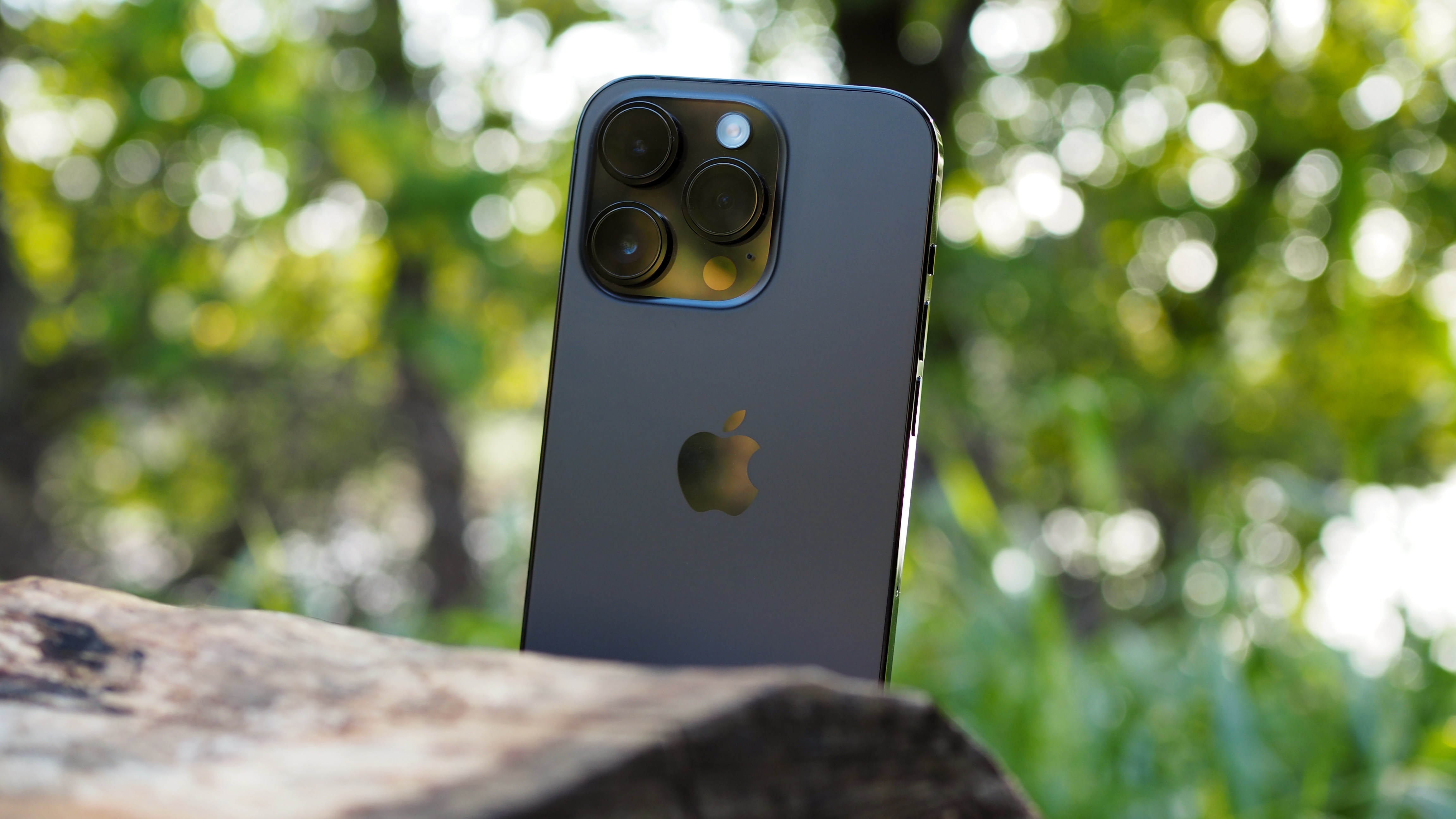
One of the major differences between the U.S. version of the iPhone 14 Pro compared to other countries is the lack of a physical SIM card tray. Instead, Apple opted to remove physical SIM for the U.S. and go all out on eSIM. Though this may pose a problem for those who travel internationally or like to constantly switch between phones, for the average user, it may not matter.
I ordered my iPhone 14 Pro directly from Apple in the U.S. and chose T-Mobile as my carrier. Once I got my iPhone 14 Pro and was setting it up, the eSIM activation was very simple and straightforward. I just had to follow the on-screen instructions — since I chose my carrier when purchasing, the device was already provisioned for T-Mobile. I was worried at first that there may be issues connecting to T-Mobile’s network, but it all went down without a hitch. Within minutes, my cellular service was activated and I could make and receive calls as well as send messages and get data.
For the average person who does not travel abroad frequently or switch between multiple iPhones and Android devices, the eSIM issue may not be a big deal. I cannot speak for those who do either of those things though, because there are all kinds of factors involved. For example, does the carrier you want to use overseas support eSIM? Is it available without having to purchase 12 months at a time? Is it actually more expensive than a physical SIM card?
For those who like to switch between Android and iPhone, well, even if your Android device of choice supports eSIM, I still think using a physical SIM card is easier for that than eSIM. But hey, I could be wrong — if I am, let me know. I think I would still prefer to just be able to pop out a little SIM card and then put it into another phone and just have my stuff work right away.
iPhone 14 Pro: Emergency SOS via satellite and Crash Detection
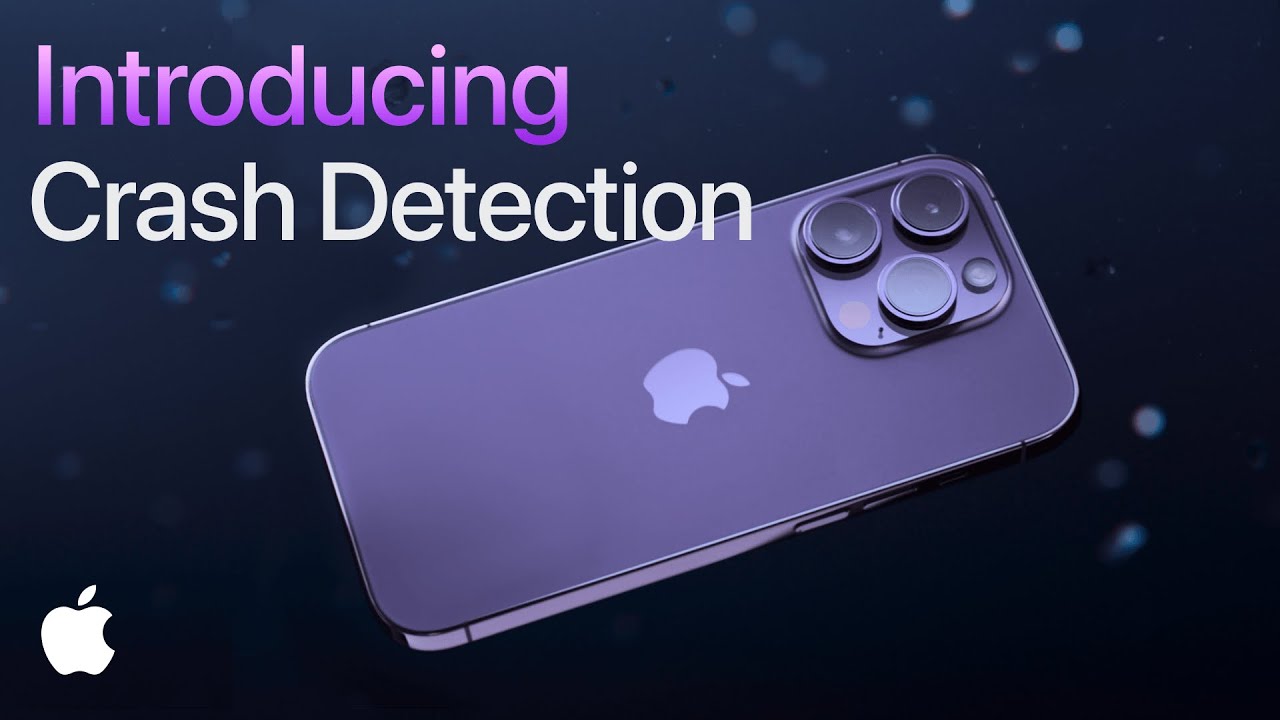
New safety features in all iPhone 14 models, including the iPhone 14 Pro, include Emergency SOS via satellite and Crash Detection. Both of these are incredibly useful to have, though it’s honestly a feature that you hopefully don’t have to use. In my time with the iPhone 14 Pro so far, I’m thankful I haven’t had to experience these features myself just yet, but it’s good to know that they’re options if I absolutely need them.
Emergency SOS via satellite will allow you to connect to emergency services by sending texts for help, even if you are nowhere near a cell tower or have Wi-Fi signal. For this feature, Apple has partnered up with Globalstar, a satellite connectivity operator, to make this all possible. To activate Emergency SOS via satellite, you hold down the side button with a volume button until the Emergency SOS comes up. But with satellite connectivity, it won’t be making a phone call like the normal Emergency SOS — instead, it will send a series of short text messages after you answer very quick questions about your situation.
The reason that Emergency SOS via satellite sends messages instead of making a call, is that satellite connectivity is very limited and does not allow for regular data, voice, or text. But for all of this to work, you’ll need to point your iPhone 14 towards a nearby satellite, so this works best when you have a clear view of the sky with few or no obstructions. Think of it this way — the situations where you may need this feature (hiking in remote areas, etc.), getting a good view of the sky shouldn’t be too difficult compared to when you’re in the city with cell towers.
Emergency SOS via satellite and Crash Detection are brand new safety features for the entire iPhone 14 lineup, not just the Pros.
Crash Detection is another safety feature exclusive to the 14 models so far, that may be more useful to a wider range of people, and though you can disable it, I don’t see why you would want to. With Crash Detection, your iPhone 14 can be used to detect when you’re in a severe car crash involving most passenger cars.
This works by utilizing the high dynamic range gyroscope and high-g accelerometer, GPS, barometer, microphone, and other advanced motion algorithms in the iPhone 14 (and Apple Watch). Once a crash is detected, the iPhone shows an alert on the screen for about 10 seconds, in which you can either swipe on the screen to call for emergency services or dismiss it if you don’t need them. However, if there is no interaction after the first 10 seconds, another 10-second countdown starts before emergency services are automatically contacted.
Again, I thankfully have not had to use either of these two features in my brief time with my iPhone 14 Pro, but having these options gives me additional peace of mind. If you are the type who loves to go hiking in remote places, then Emergency SOS via satellite is a must-have feature. And well, anyone could benefit from Crash Detection, regardless of whether or not you actually drive.
Also, keep in mind that these safety features are not just on the iPhone 14 Pro models — it is also available on the standard iPhone 14 and iPhone 14 Plus.
iPhone 14 Pro: Software and performance with A16
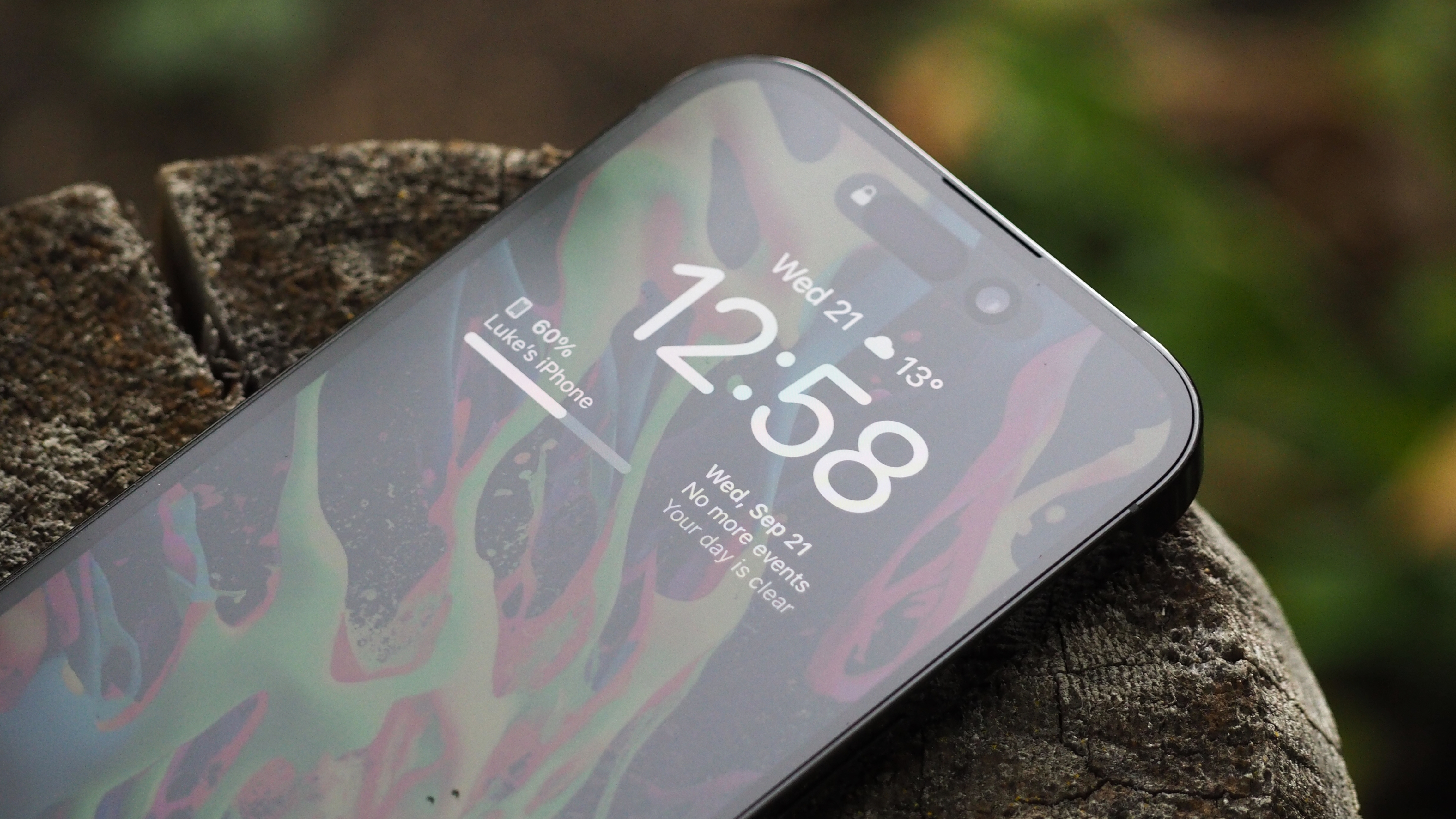
The iPhone 14 Pro and iPhone 14 Pro Max both have Apple’s newest A16 Bionic chip packed inside, while the iPhone 14 and iPhone 14 Plus are on the A15 from last year. Like the A15 before it, the A16 has a 6-core CPU with two performance and four efficiency cores, a 5-core GPU for faster graphics performance, and a 16-core Neural Engine.
Honestly though, coming from an iPhone 13 Pro with the A15 that was already pretty fast, the A16 performance improvements are hard to notice in my daily use. But if someone is coming from, say an iPhone XS, then the A16 will definitely be a huge jump in performance.
Apple touts the A16 as the “ultimate smartphone chip” that powers the capabilities of the iPhone 14 Pro. The faster 6-core CPU can handle any workload you throw at it smoothly and efficiently, while the 16-core Neural Engine can perform 17 trillion operations per second, making it possible for pixel-by-pixel analysis with the new Photonic Engine. Gamers should expect even better performance with 50% more memory bandwidth.
Of course, this is how Apple advertises the A16, so it’s marketing jargon. However, I have found the iPhone 14 Pro to be fast and snappy with iOS 16 so far, especially when it comes to editing photos and videos on the device. One of the reasons to purchase an iPhone Pro is the capability of shooting 4K ProRes video, which can equate to incredibly large file sizes — one minute of footage eats up 6GB alone! With the A16 chip, one could apply edits and filters to that 4K ProRes footage, and it would render pretty much instantaneously.
Again, if you’re coming from an iPhone 13, or even an iPhone 12, you may not notice the snappiness and improved responsiveness of the A16. But if you are coming from an older iPhone, then it’s going to be very evident when you first pick up the phone and start using it. While you're upgrading, one of the best Wi-Fi routers for Apple devices may help with local network speeds at home.
iPhone 14 Pro: Cameras
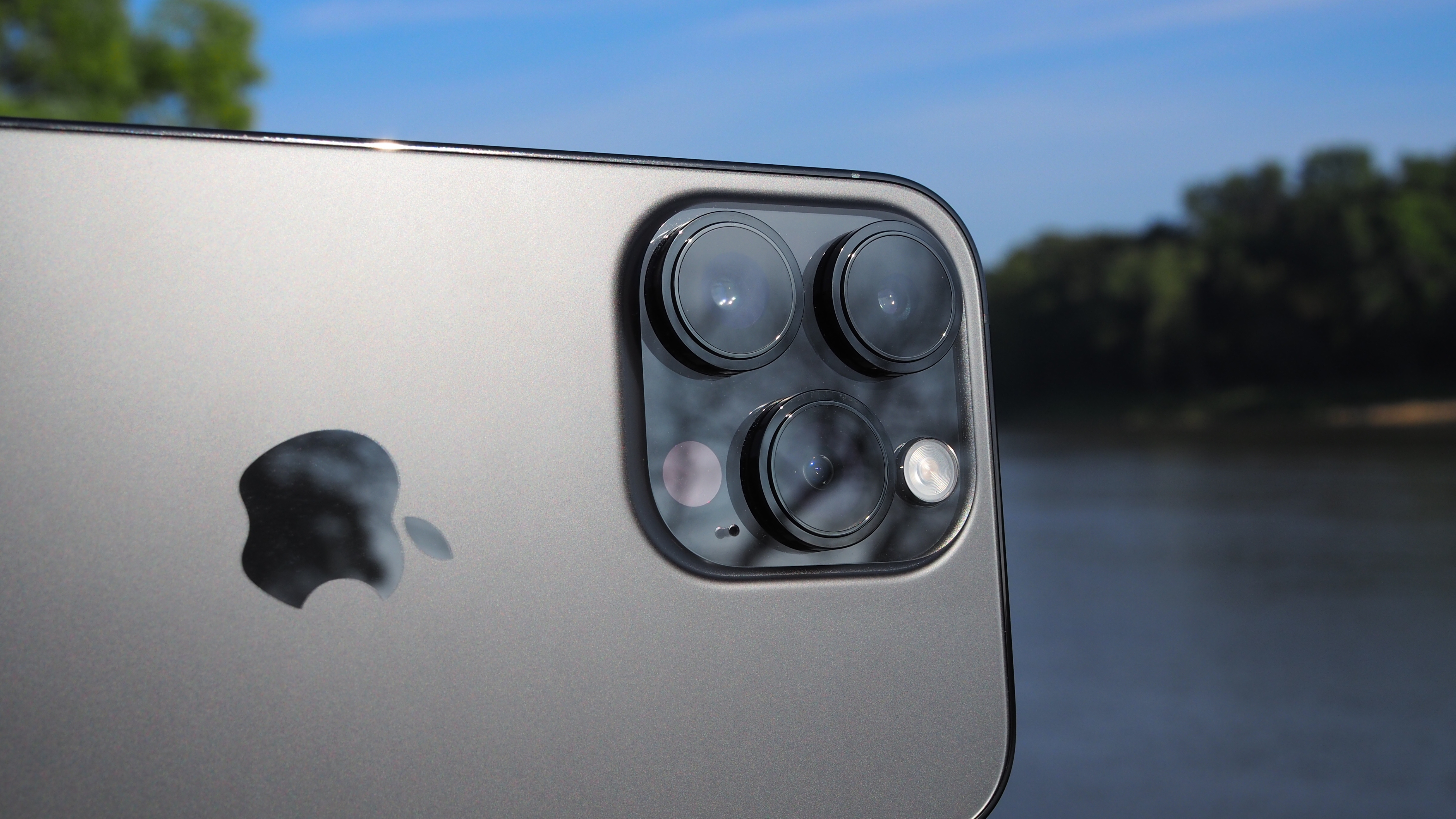
For those serious about photography, the iPhone 14 Pro is the one to get. With the iPhone 14 Pro and iPhone 14 Pro Max, you get a triple-lens camera system: 48-megapixel Main camera, 12-megapixel Ultra Wide, and 12-megapixel Telephoto. However, while Apple advertises the 48-megapixel Main camera, it doesn’t quite work the way you think it would.
If you're expecting all of your regular photos to say “48 MP” in the image metadata, don’t. The way the 48-megapixel main camera on the iPhone 14 Pro works is due to the quad-pixel system. That means that there are four sub-pixels that makeup one larger pixel, and thus that’s where the 48-megapixel count comes from. So when you shoot a regular photo, it will still say “12 MP” in the image metadata when you view it.
However, if you opt to shoot in ProRAW format, there is an option for the full 48 MP resolution, though these files can end up around 75MB or more each, and the resolution is 8064x6048 pixels. So though the iPhone 14 Pro can shoot in 48MP, it’s probably not something that you’ll want to be doing all the time. But if you want the most detail in an image, and you plan on printing the photo out on a larger canvas, then turning on the 48MP ProRAW resolution will give you the best image quality possible.
Because the 48MP Main camera uses a quad-pixel system, the final resulting image will still say 12MP in the metadata. However, you can shoot in full 48MP ProRAW format for the absolute highest level of detail for the post-editing process.
But Apple has done more than just give the Main camera a huge boost to 48MP (the largest jump for iPhone cameras yet). The main camera now has a wider focal length (from 26mm to 24mm), which means that more of the scene you want to capture can now fit in the frame. It’s a minor detail, but it can make all the difference when you want to get that perfect shot. Additionally, all of the camera lenses across the board now have larger sensors, which allows more light to be captured for each photo. From the iPhone 13 Pro, the iPhone 14 Pro Main camera went from a ƒ/1.5 to ƒ/1.78 aperture, and the Ultra Wide went from ƒ/1.8 to ƒ/2.2 with more focus pixels for sharper images. The Telephoto aperture remains the same with 3x optical zoom, but Apple included 2x on the Telephoto thanks to the quad-pixel sensor system.
Apple has also implemented the new Photonic Engine, which is also available on the standard iPhone 14 models as well as the Pros. This is a new computational photography process developed by Apple that improves mid and low-light photos you take by integrating the Deep Fusion process earlier in the post-processing pipeline before the multiple images taken for the shot are compressed together into a single photo.
Essentially, it’s the evolution of Deep Fusion, which was introduced with the iPhone 11 series. For those who need a refresher, the Deep Fusion process took a total of nine images — four are captured before you hit the shutter button, and another four are captured when you press the button. Deep Fusion takes all of those images and compiles them into a single image that combines the best parts of those images into one. With Photonic Engine, the Deep Fusion process happens earlier on uncompressed images, so more detail, color, and exposure will appear in the final image.
Another improvement this year is with the 12MP TrueDepth camera, which now has autofocus for the first time, as well as a ƒ/1.9 aperture for better low-light photos. This means faster focusing in low light, and it’s easier to capture group selfies with a wider field of view. Those who take videos will appreciate the new Action Mode, which uses its full sensors with more overscan and advanced roll correction to correct significant shaking, vibration, and other unintended motion when recording video footage. Basically, you can get smooth videos without the need for a gimbal accessory.
My colleague Luke Filipowicz was able to test and compare the iPhone 13 Pro and iPhone 14 Pro cameras, and there are some observations that he noticed.
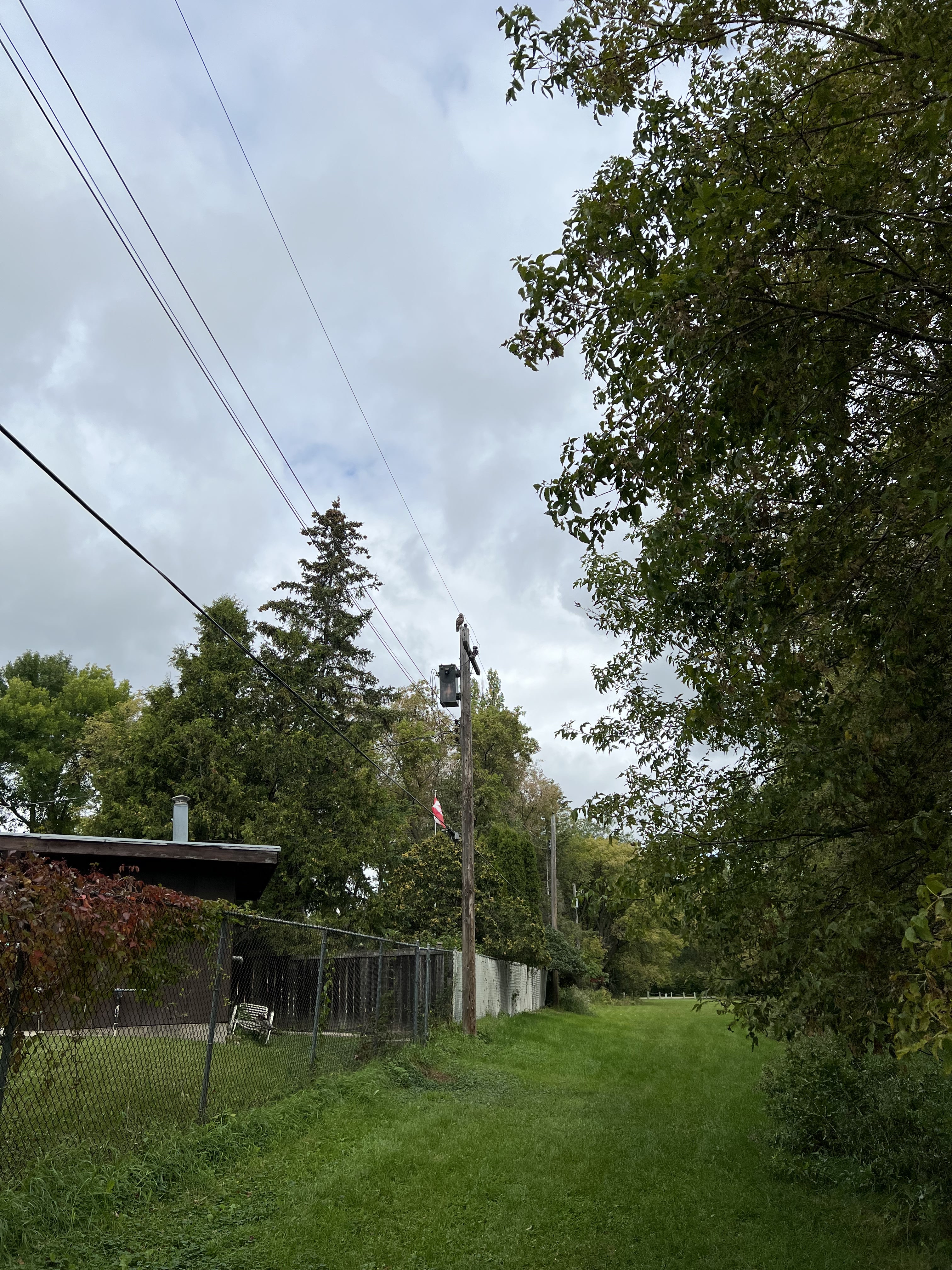
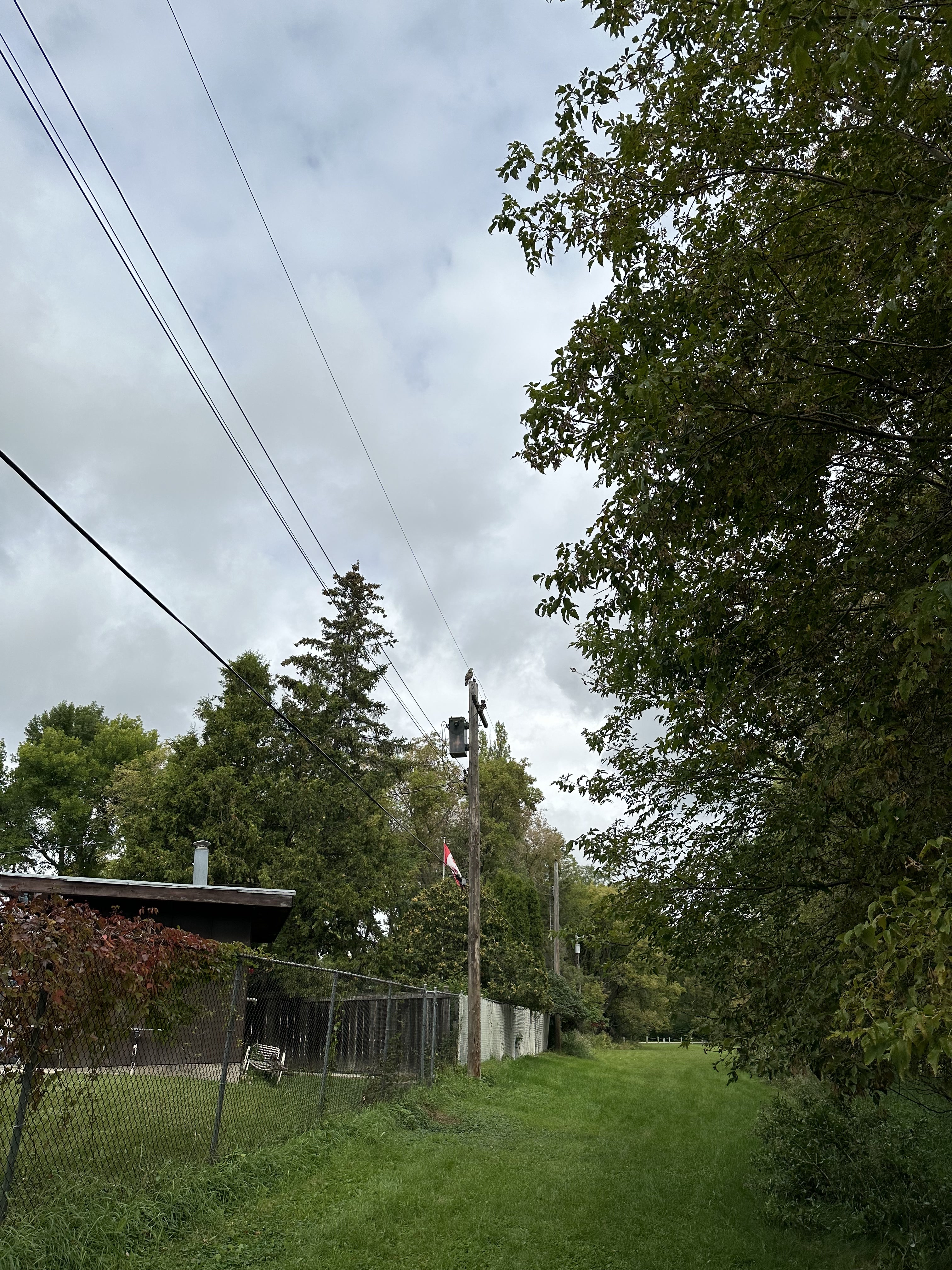




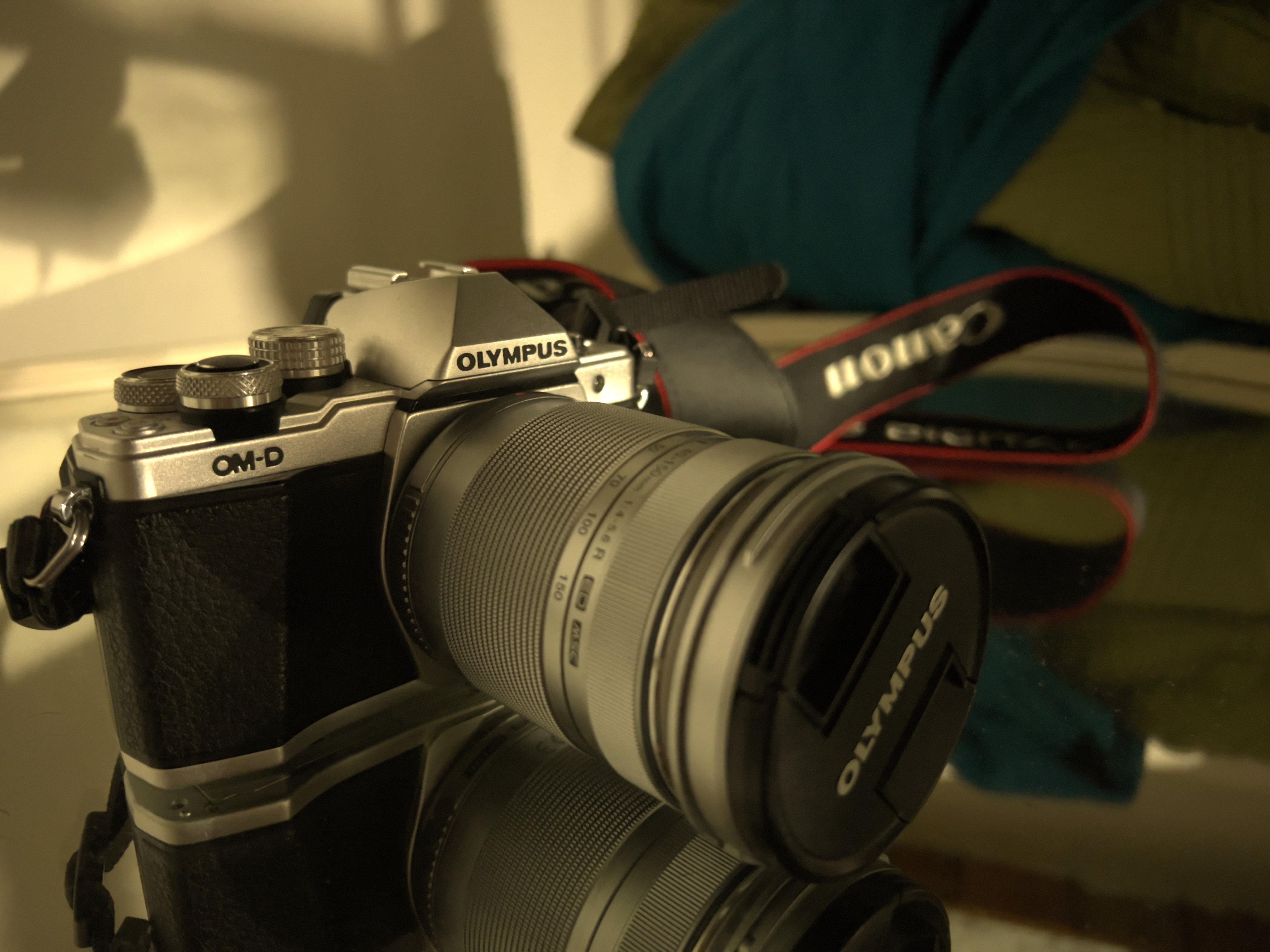
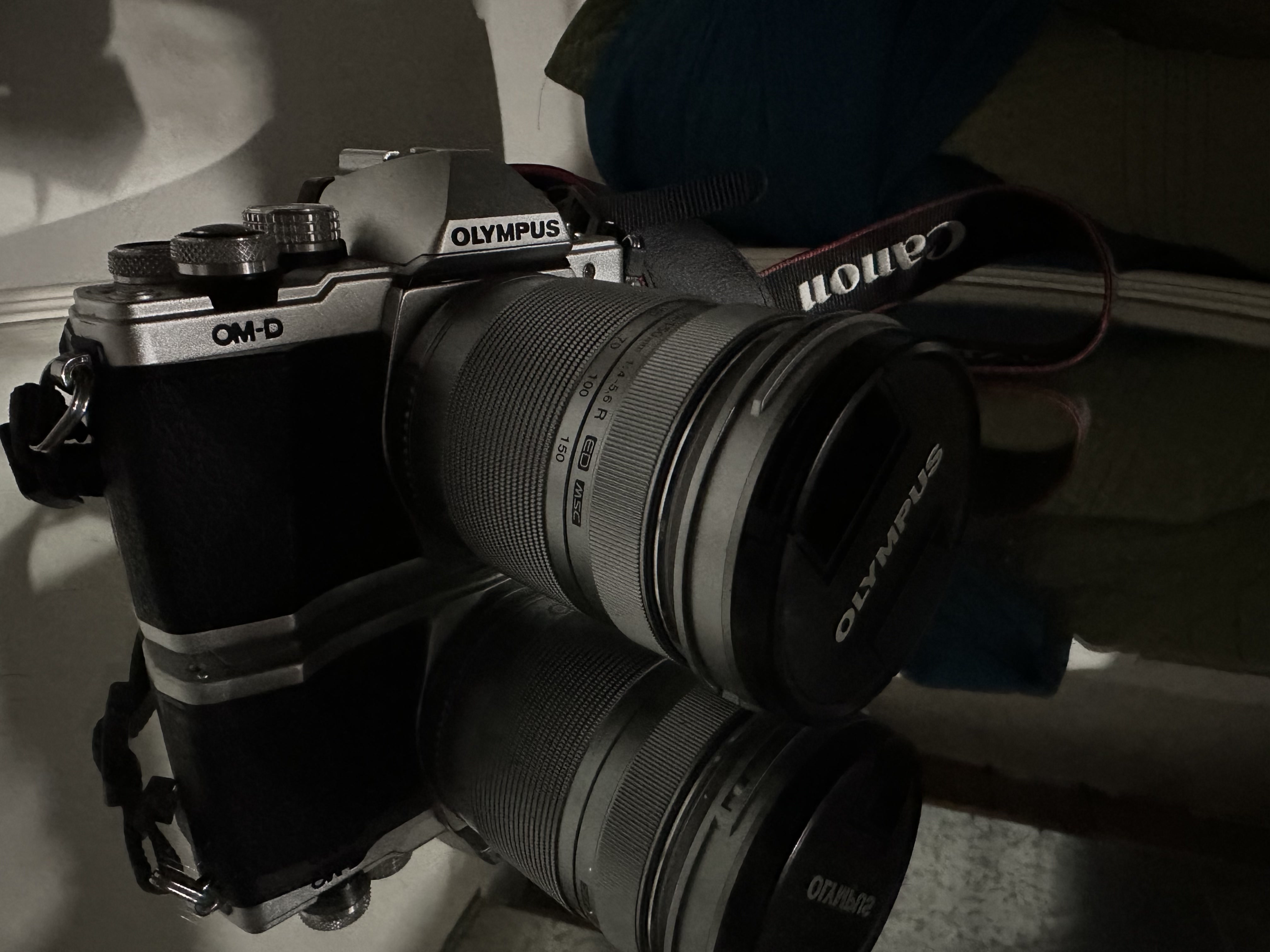
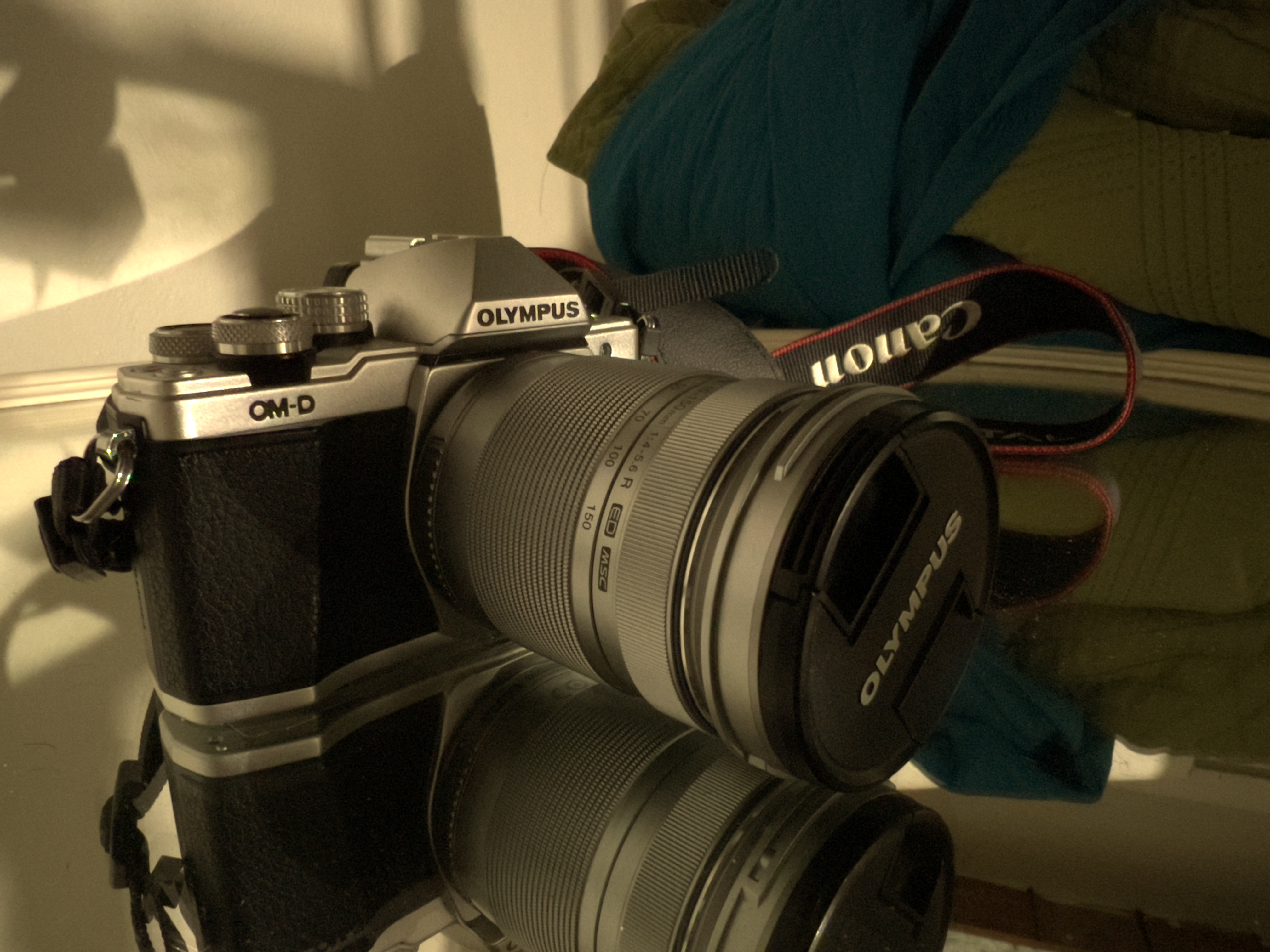
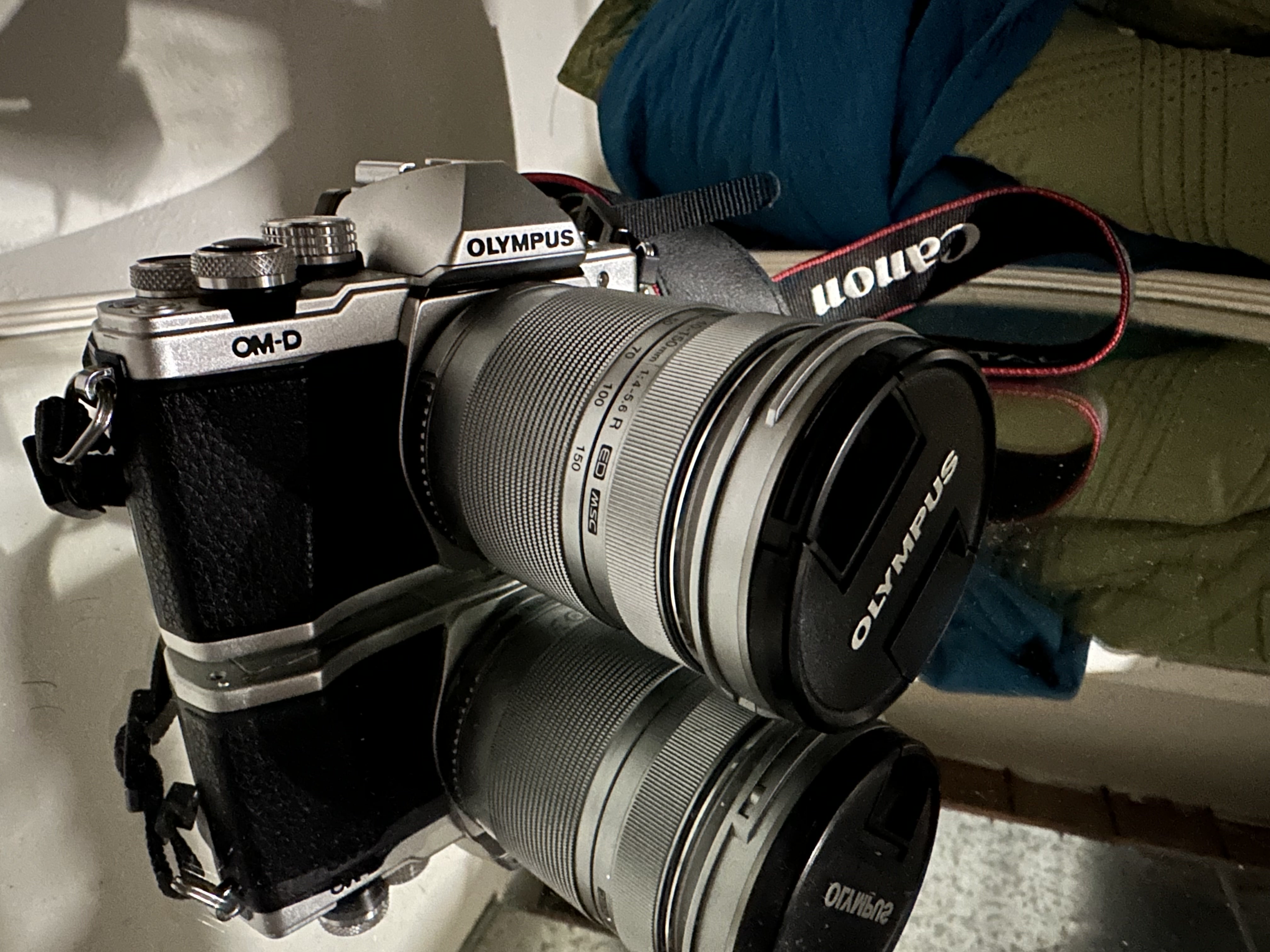
According to Luke, the average user probably won’t notice a huge difference between the iPhone 14 Pro camera and its predecessor, but there are a couple of small changes that you can notice when looking closely.
Across the board, we found the iPhone 14 Pro shots to be a little less saturated in color and, at times, a little cooler or warmer in temperature. You can really notice the difference if you look at the sky and Canada flag in the pics with the bird on a hydro pole. Also, in the ultra-wide pics of the path in the woods, you’ll notice that there’s a bit more contrast to the photo taken by the iPhone 14 Pro as well — take a look at the detail of the woodchips for example.
What surprised us the most though, was that Night Mode doesn’t want to activate as frequently on the iPhone 14 Pro as it does on the previous generation. However, low-light photos on the iPhone (Night Mode or not) still remain some of the hardest shots to pull off well. Even with the iPhone 14 Pro’s better camera array, the results of my low-light shots here leave something to be desired.
Of course, if you are actually a professional photographer, you’ll likely be able to pull off some very sweet shots using the iPhone 14 Pro. I will say, even for a very amateur photographer such as myself, I really appreciate how large the 48MP shots on the main lens are — it makes for a better post-editing process to just have so many more options for cropping available to you.
iPhone 14 Pro: Battery life
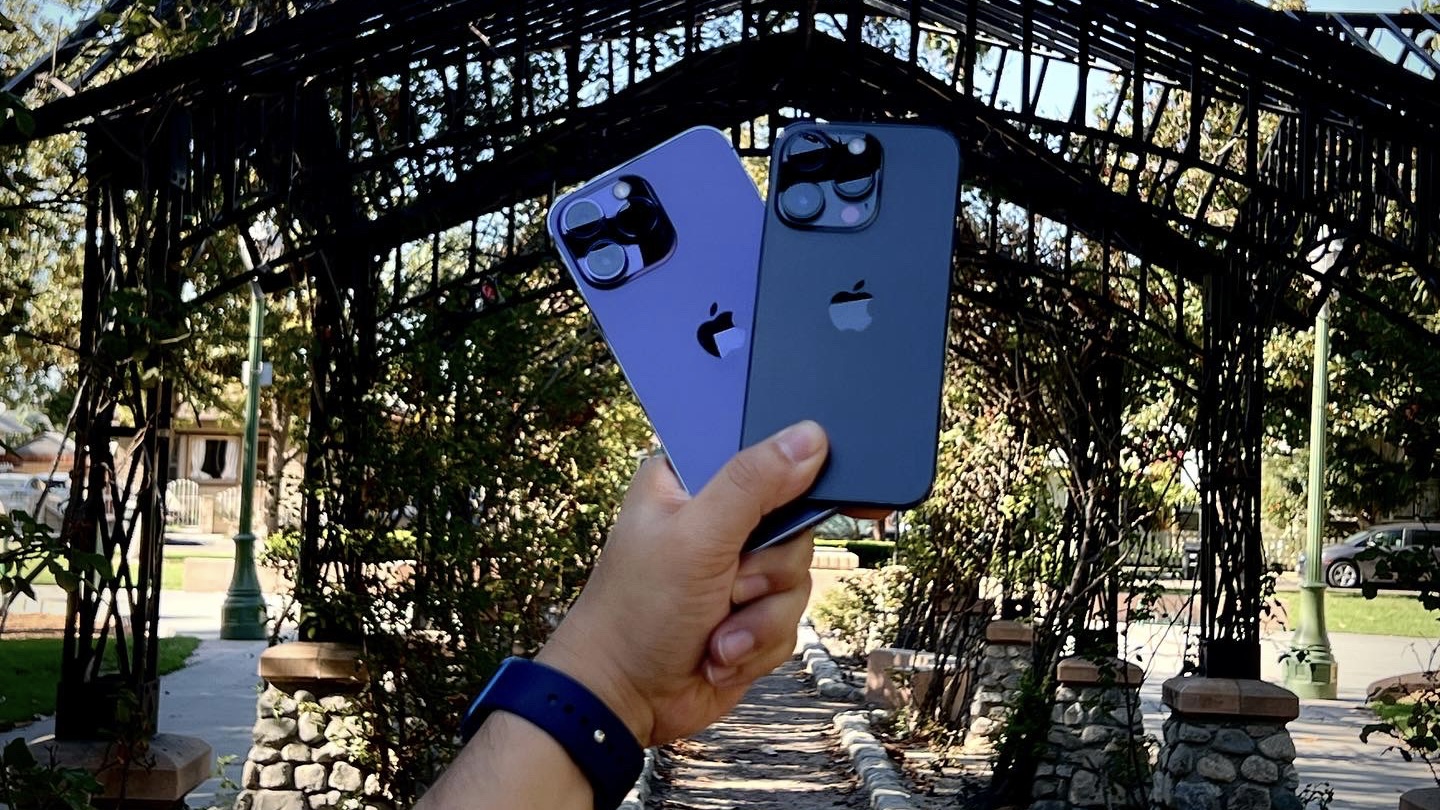
I previously used the iPhone 13 Pro, which I thought had amazing battery life. It would make it to the end of the day with juice left to spare. It’s still pretty early with the iPhone 14 Pro, but so far, with pretty much the same usage habits, the iPhone 14 Pro is about the same. This involves constantly checking emails and social media throughout the day, playing some Disney Emoji Blitz in my free time, and shooting photos and videos.
From my usual daily use case, the iPhone 14 Pro battery is pretty comparable to the iPhone 13 Pro, though I believe that iOS 16 may have put a small dent in it.
But if you’re worried about the AOD affecting battery life, don’t be! I’ve kept my AOD on since setting up my phone, and again, the battery is about the same as my previous one. Any effect that the AOD has on the battery for me is quite negligible, and honestly, if you notice more drain on the battery than before, then the AOD can be turned off.
According to Apple’s spec sheets, the iPhone 14 Pro should last about 23 hours on a single full charge, which is about an hour more than the iPhone 13 Pro before it. Those who want the most battery should think about the iPhone 14 Pro Max, which I discuss over in the next section.
However, Apple still does not include an AC adapter in the box, and you’ll still get the fastest charging speeds with a separate adapter of 20W or higher for wired charging. MagSafe is still 15W, and Qi-compatible chargers remain capped at 7.5W, unfortunately. With a 20W adapter, Apple says you should be able to get about 50% charge in just 30 minutes.
iPhone 14 Pro: Go big or go home? iPhone 14 Pro Max in brief
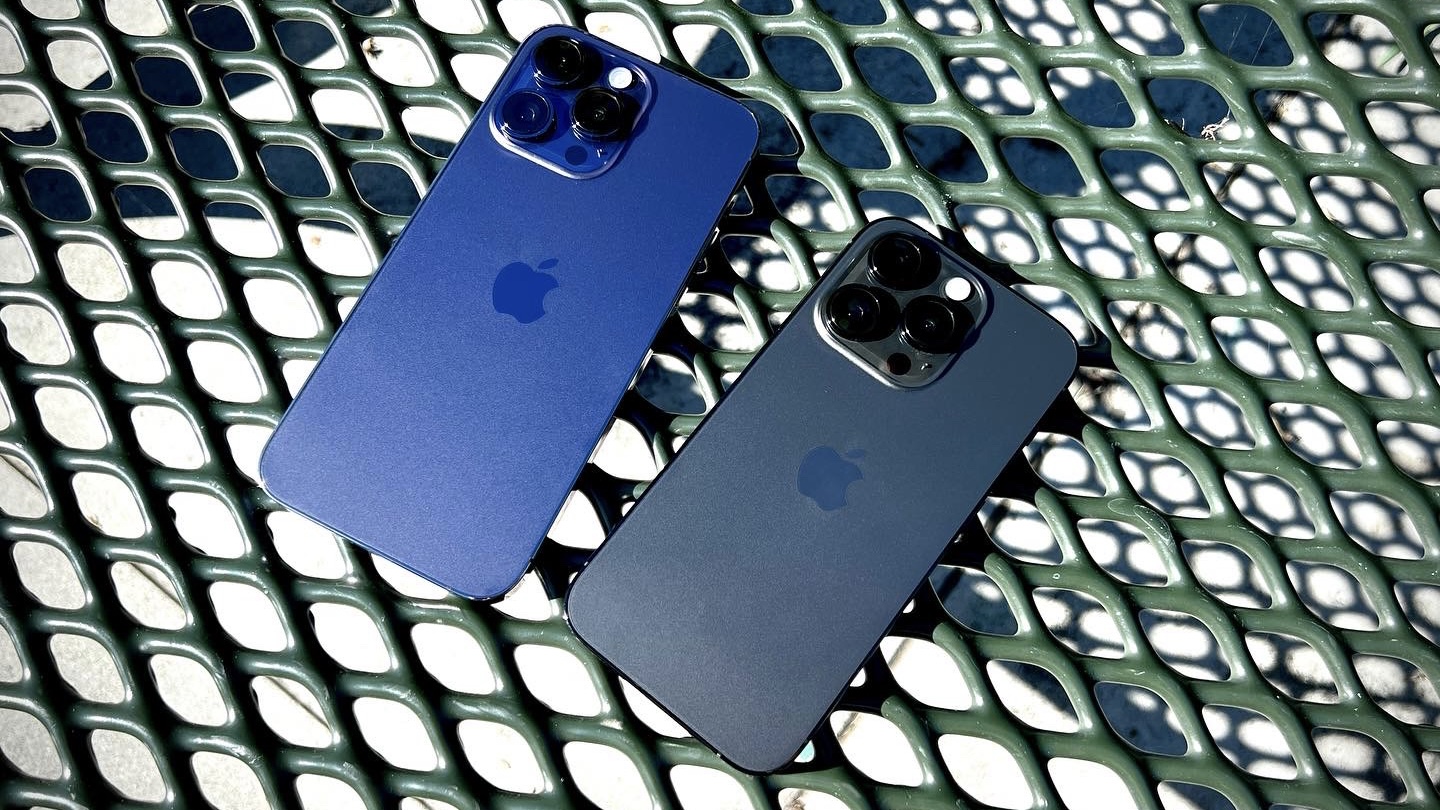
While I personally prefer the standard-size iPhone 14 Pro with the 6.1-inch screen, those who like a larger screen should definitely go with the iPhone 14 Pro Max. I just find the size a little unwieldy myself, but this is all subjective.
Spec-wise, there are few differences between the regular iPhone 14 Pro and the iPhone 14 Pro Max, but the Pro Max will display more information on the screen at once with a 6.7-inch display, and it has a few more hours of battery life (29 hours versus 23 hours, respectively). Other than that, both models have the same A16 Bionic, triple-lens camera system with a 48-megapixel Main camera, 12MP TrueDepth camera, Dynamic Island, AOD, up to 1TB storage, and more. Whether you go big is ultimately up to you and how comfortable you are with a large phone.
iPhone 14 Pro: Competition
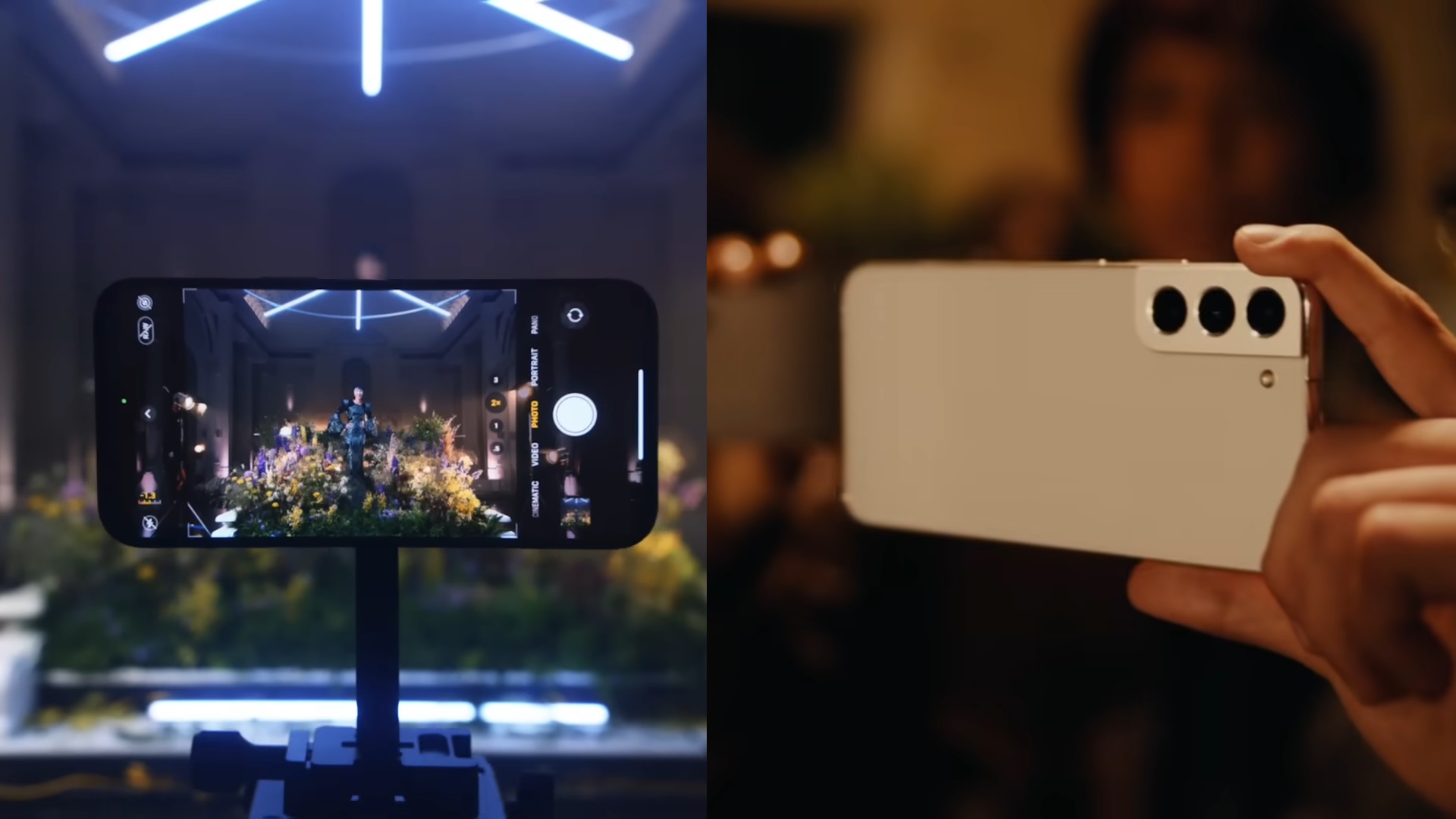
Since the iPhone 14 Pro is Apple’s new flagship iPhone, the best comparable competitor on the market right now is the Samsung Galaxy S23 Ultra. While Apple uses the Ceramic Shield glass on the front screen, which makes it more shatter-proof than the S23, the S23 Ultra's Gorilla Glass Victus 2, is actually more scratch-resistant than Apple.
However, though the S23 Ultra is bigger than the iPhone 14 Pro (but not the iPhone 14 Pro Max), the display does not quite match up to it. The S23 Ultra only has a resolution of 1440 x 3088 pixels with 500 PPI, while the iPhone 14 Pro has 1179x2556 resolution and 460 PPI. The display on the iPhone 14 Pro can also go up to 2000 nits of peak brightness, while the S23 Ultra maxes out at 1750 nits.
The Samsung S23 Ultra uses Qualcomm SM8550-AC Snapdragon 8 Gen 2 chip inside, but in terms of raw power, Apple’s A16 (and arguably, even the A15) is a much better choice. For most people, the difference may be negligible, but for power users, the iPhone 14 Pro will still beat the S23 Ultra in terms of performance.
The iPhone 14 Pro also has more storage capacity than the S23 Ultra, which tops out at 1TB with 12GB RAM, while the iPhone 14 Pro also goes up to 1TB.
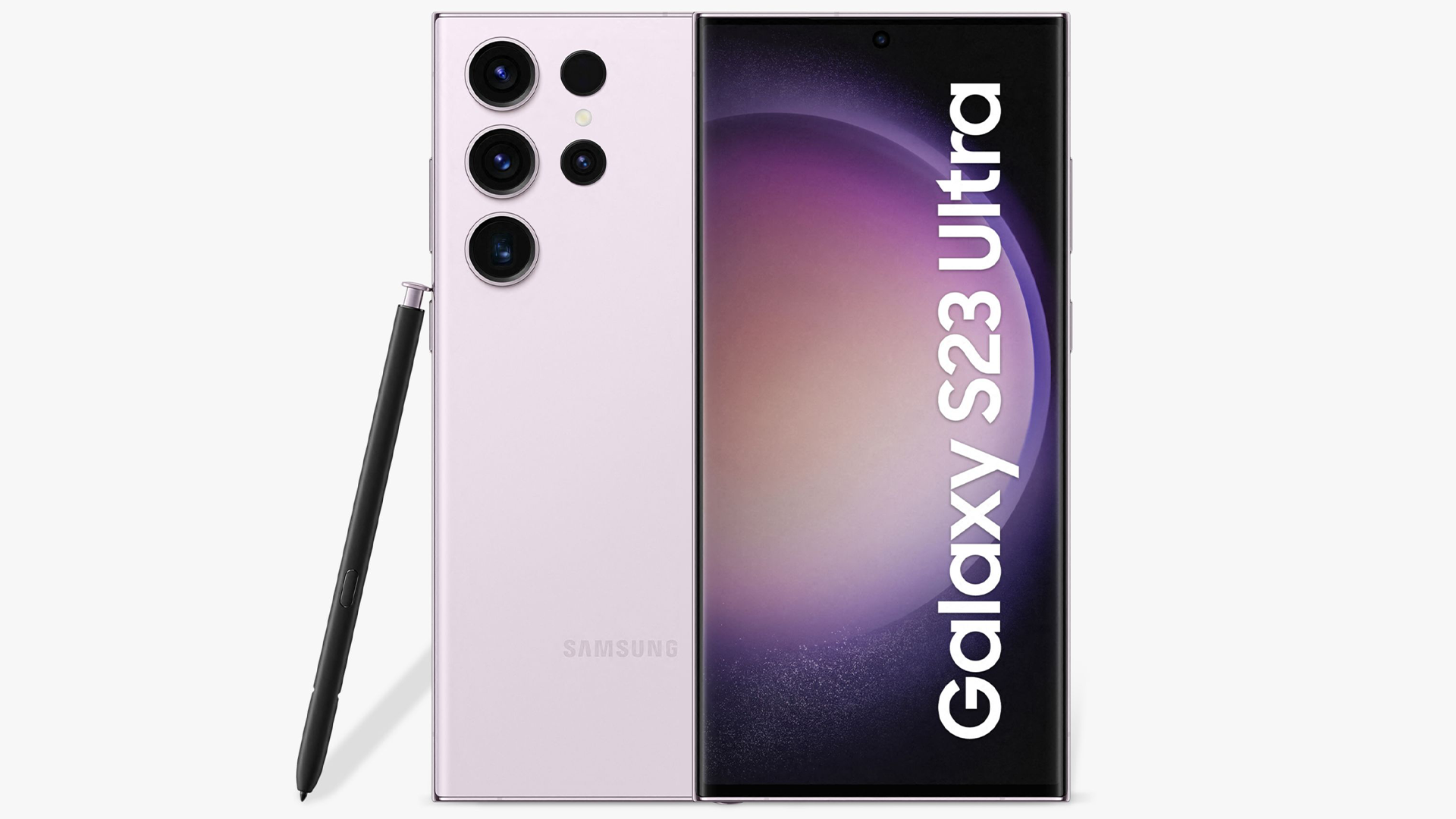
Of course, the biggest difference between the iPhone 14 Pro and Samsung’s S23 Ultra is the operating system. With the iPhone 14 Pro, you have iOS 16, which is a seamless experience for those who are already invested in the Apple ecosystem. But if you want more flexibility with what your phone can do, then S22+ is the way to go with Android 13 and One UI 5.1. Android is definitely king when it comes to customization, especially with the Material You options, but if you don’t particularly care about that aspect, then iOS 16 should be fine.
With iOS 16, Apple gives us some Lock Screen customization (on top of iOS 14’s Home Screen customization, though it’s still far from what Android can accomplish), edit and undo send in iMessage, multi-stop routing in Apple Maps, and more. Android 13 does also have better notifications, but the iPhone 14 Pro has the Dynamic Island, which as I mentioned earlier, is an incredible feat of blending together hardware and software into something unique and seamless.
And on the camera front, the iPhone 14 Pro has made some major leaps and could be catching up to the S23 Ultra. While the S23 Ultra has a 200 MP primary camera, 12 MP, f/2.2 ultra wide, 10 MP, f/2.4 telephoto, and 12 MP, f/2.2 front camera, the iPhone 14 Pro is also up there with a 48MP Main, 12MP Ultra Wide, 12MP Telephoto, and 12MP TrueDepth front camera. Though Samsung still has higher zoom (up to 30x space zoom), if that does not matter, then the iPhone 14 Pro is definitely the way to go with an impressive 3x optical zoom. Of course, it’s important to note that there are algorithmic differences in how Apple and Samsung choose to process photos taken with these devices, so you may find you prefer how the iPhone 14 Pro handles colors and saturation or vice versa. Again, both have great cameras, but the end result may depend on what you prefer your photos to look like (more natural and true-to-life versus too vivid and washed out), though magic can always be worked in the post-editing process too.
While both the iPhone 14 Pro and the Samsung Galaxy S23 Ultra are good phones, we definitely would still recommend the iPhone 14 Pro. Not only is it just better overall if you are already invested in the Apple ecosystem, but Apple has made some huge leaps in upgrades this year, especially with the Dynamic Island, camera system, and display.
iPhone 14 Pro: Should you buy it?
Buy the iPhone 14 Pro if...
You want a great iPhone.
The iPhone 14 Pro packs in a powerful A16 Bionic chip, gorgeous Always-On display, Dynamic Island, a 48-megapixel main camera, and a 12MP TrueDepth camera for the absolute best iPhone experience yet. It can now be bested by the iPhone 15 Pro, but it's still a highly capable handset.
You love to take photos and videos with your iPhone.
The 48-megapixel Main camera is an absolute beast, allowing you to take incredibly detailed photos, including up to 48MP ProRAW format that is perfect for editing and printing on large canvases. And video lovers will appreciate the new Action Mode, allowing you to capture super smooth video without the need for a gimbal.
You’ve been wanting an iPhone with an AOD.
This is the first iPhone with an Always-On display, and though it’s different from how a lot of Android devices present it, I’m a fan. It’s great to be able to just glance at the iPhone on a desk to quickly see what time it is without having to tap or wake up your device.
Don't buy the iPhone 14 Pro if...
You’re on a tight budget.
As great as the iPhone 14 Pro is, there’s no doubt that it’s quite pricey. Though we believe the Pro models are better than the standard ones, if you can’t spare the extra dough, then the iPhone 14 is still good, and it has Emergency SOS via satellite and Crash Detection.
You aren’t serious about iPhone photography.
The iPhone 14 Pro is an absolute beast for iPhone photography with that 48MP Main camera. However, if you just want to be able to snap some decent photos just to post on social media, then it may be overkill.
You don’t care about the AOD or Dynamic Island.
I’m a fan of how Apple has handled both the AOD and Dynamic Island, but I know it’s not for everyone. If these aren’t your cup of tea, that’s perfectly fine! At least the AOD can actually be turned off completely if you so choose, but the Dynamic Island is here to stay.
iPhone 14 Pro: Verdict

Though Apple launched four iPhone 14 models back in September 2022, the iPhone 14 Pro lineup is still the way to go. The standard iPhone 14 is just not that much different than the iPhone 13 before it, as it still uses the A15 Bionic, retains the notch, and just has a slightly improved camera system with the addition of Emergency SOS via satellite and Crash Detection.
But the iPhone 14 Pro features so many more unique features that make it worth the money: Always-On display, Dynamic Island, 48-megapixel Main camera, 12MP TrueDepth front-facing camera, up to 1TB storage, ProRAW support, longer-lasting battery life, and so much more. Even though the iPhone 14 starts at $799, you’re just not getting enough new stuff to make it worth the price, especially when you can still get an iPhone 13 for less. Seriously, the iPhone 14 Pro still reigns supreme.
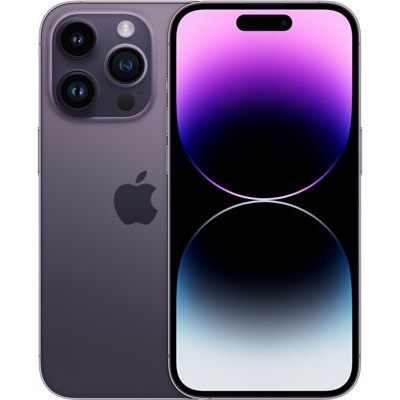
The best in class
The best iPhone you can get right now, the 14 Pro builds on its predecessors with an upgraded A16 chip, an Always-On Display, this generation's improved safety features and, as a sign of things to come, no physical SIM tray.
For
- Blazing fast performance with A16
- 48-megapixel main camera with triple lens camera system
- Dynamic Island is a useful notch replacement
- Up to 1TB of storage space
- Finally has an Always-On display
Against
- Expensive
- Deep Purple could have been more...purple
Christine Romero-Chan was formerly a Senior Editor for iMore. She has been writing about technology, specifically Apple, for over a decade at a variety of websites. She is currently part of the Digital Trends team, and has been using Apple’s smartphone since the original iPhone back in 2007. While her main speciality is the iPhone, she also covers Apple Watch, iPad, and Mac when needed. When she isn’t writing about Apple, Christine can often be found at Disneyland in Anaheim, California, as she is a passholder and obsessed with all things Disney, especially Star Wars. Christine also enjoys coffee, food, photography, mechanical keyboards, and spending as much time with her new daughter as possible.
- Luke FilipowiczStaff Writer
